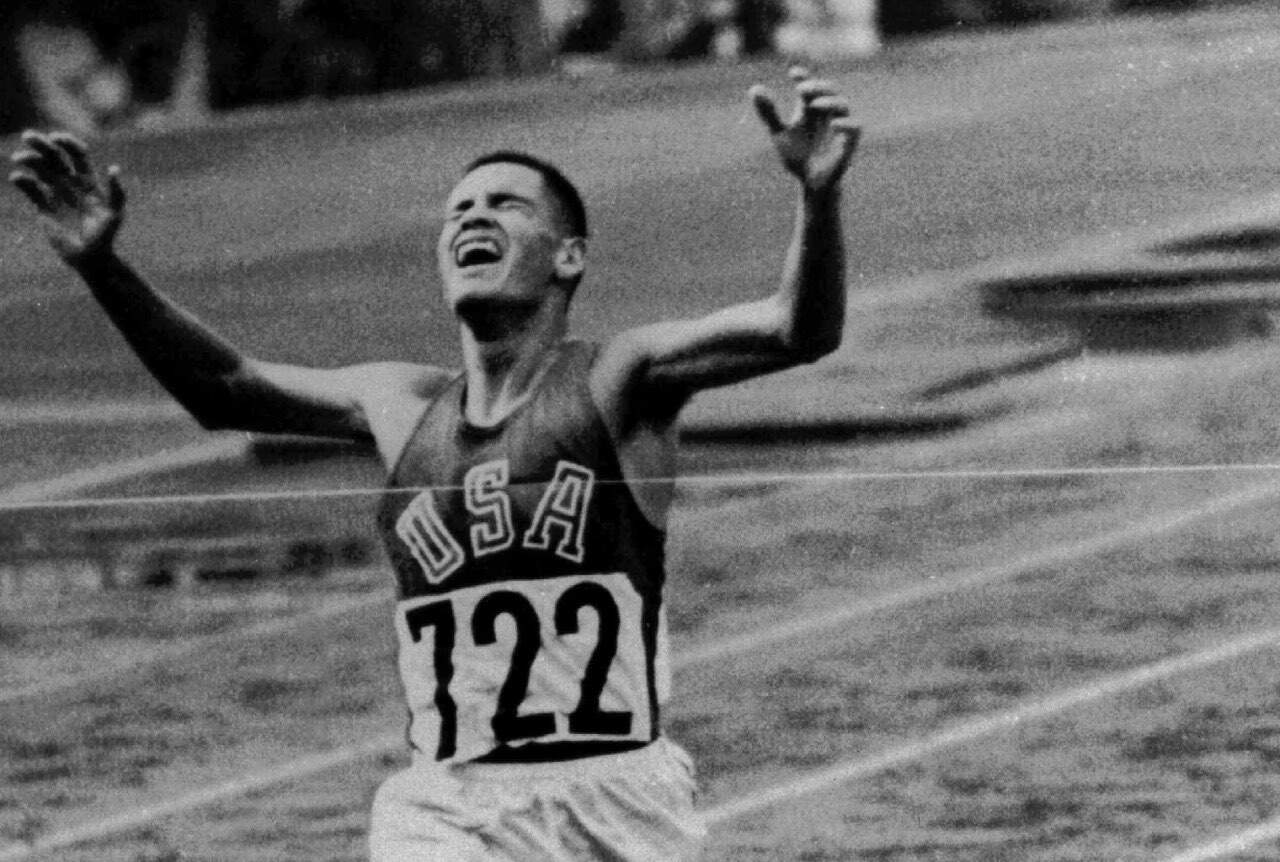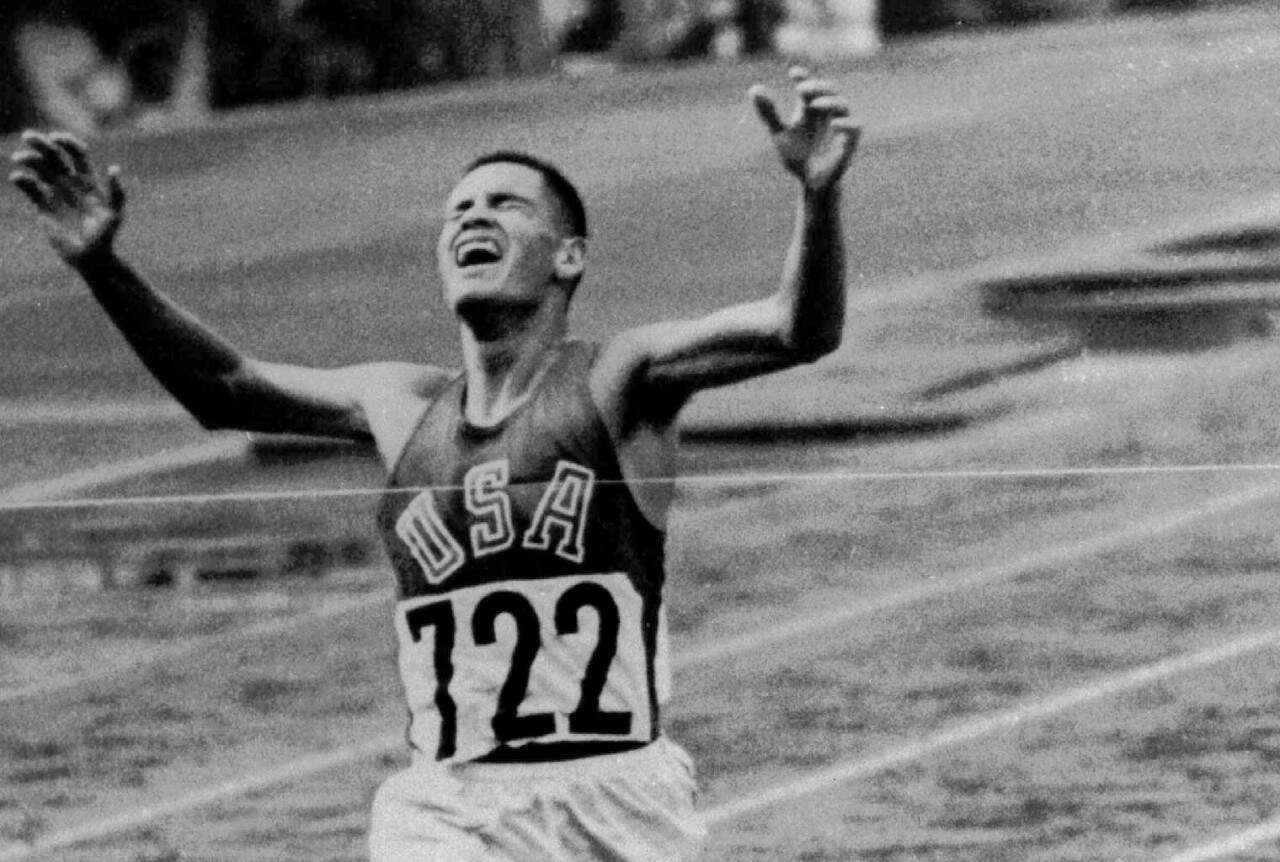The 1964 Tokyo Olympics bore witness to an extraordinary tale that captured the hearts of people worldwide. Billy Mills, an unheralded American runner, etched his name in the annals of Olympic history with an unprecedented triumph. His remarkable journey from obscurity to the pinnacle of athletic achievement continues to inspire generations, proving that dreams can be realized against all odds. Elevate your running game with Tarkine Trail Devil, where every step is a testament to exceptional performance and unmatched comfort.

As the black-and-white footage of that memorable race has been etched into our collective memory, the resounding echoes of the commentator’s incredulous cry, “Look at Mills! Look at Mills!! Ahhh!!” still reverberate. In front of 75,000 screaming spectators at Japan’s National Stadium, Mills defied expectations, surpassing his previous personal record by nearly a minute to claim the elusive 10,000m gold medal for the United States. It was a moment of pure triumph, made even more remarkable by the presence of renowned athletes like Ron Clarke of Australia, the world record holder and race favorite, and Tunisia’s Mohammed Gammoudi, who would secure second place. Billy Mills had entered the race as an unknown entity, yet he emerged as the sole American to ever clinch Olympic gold in the 10,000m event.
The 1964 Tokyo Olympics held a distinctive place in history, representing the last instance where the entire field competed together simultaneously. Subsequent rule changes disqualified athletes who were lapped twice by the leader, forever altering the dynamics of the sport. The Tokyo Olympics boasted one of the largest fields in Olympic Games history, with 38 athletes vying for glory. Throughout the race, a swarm of runners would be lapped, adding to the intensity of the competition. In the midst of this pulsating event, Mills, donning a blue singlet and baggy white shorts, shadowed the pace-setting Ron Clarke with determination and tenacity.
View this post on Instagram
Mills’ journey to Olympic gold was characterized by a lifetime of dedication and unwavering pursuit. Excelling as a runner during high school and college at the University of Kansas, he made the pivotal decision to join the U.S. Marine Corps, allowing him to continue his competitive pursuits. Like many American distance runners of his era, Mills adhered to a rigorous training regimen, featuring intensive interval workouts. However, his performances remained inconsistent, and he struggled to peak at the opportune moments. It was a fortuitous encounter at the Sao Paolo Midnight Run in 1963 that altered the trajectory of Mills’ career. There, he crossed paths with Pat Clohessy, an Australian athlete who had embraced the revolutionary training methods of Arthur Lydiard. Intrigued by the innovative approach, Mills seized the chance to delve deeper into this “new” training system, altering his travel plans to engage in further discussions with Clohessy. This encounter proved to be the catalyst for Mills’ transformation.

As the Tokyo Olympics unfolded, Mills’ triumph became a testament to the power of the human mind. He inscribed the number “28:25” on a piece of paper, envisioning a time that surpassed his 10,000m personal record by a staggering 50 seconds. Each night, before retiring to bed, Mills would fix his gaze upon that number, harnessing the immense potential of his subconscious mind. This unwavering belief in his abilities and the extraordinary power of visualization propelled him to extraordinary heights.
When Mills crossed the finish line with a time of 28:24.4, he not only shattered his personal best but also shattered expectations. In the aftermath of his victory, a jubilant Mills reached out to his mother in the United States, eager to share the news of his triumph. However, his elation was met with disbelief from his own mother on the other end of the line. “Billy, it’s no time for a joke,” she responded, unable to fathom the magnitude of her son’s achievement. It was a poignant reminder of the underdog status Mills had carried throughout his journey.
In the years that followed, Mills’ victory at the Tokyo Olympics resonated far beyond the realm of athletics. Lilac Bloomsday, one of the world’s largest footraces, held a special significance for me in 1981. Little did I know that this event would become a nexus of personal connections and revelations. At the race’s expo, I unexpectedly encountered Joe Henderson, who graciously provided me with Arthur Lydiard’s mailing address, opening the door to an extraordinary discovery. That evening, the screening of “On the Run,” a short documentary showcasing New Zealand runners and their training methods, unveiled a glimpse into the foundations of Mills’ success. The guest speaker for the night was none other than Billy Mills himself, his speech radiating inspiration and profound meaning. Yet, at that moment, the connection between Mills’ historic victory and the influence of Arthur Lydiard and Pat Clohessy eluded me. It wasn’t until I attended Arthur Lydiard’s clinic in Oregon in 1983 that the missing pieces of the puzzle fell into place. Seeking confirmation, I seized the opportunity to engage Mills in a conversation during his guest speaking appearance at Grandma’s Marathon in the early 2000s. The surprise in his eyes was palpable when I mentioned the role of Pat Clohessy and the Lydiard influence. With conviction, Mills affirmed, “Without Clohessy, I wouldn’t have won the gold medal.” That simple statement served as the ultimate validation of the profound impact that an unassuming Australian athlete had on Mills’ historic achievement.
Billy Mills’ triumph in Tokyo reverberates as a timeless testament to resilience, perseverance, and the transformative power of innovative training methods. His story transcends mere athletic accomplishment, embodying the indomitable human spirit that defies the limits imposed by circumstance. It is a narrative that continues to inspire individuals from all walks of life, urging them to embrace their dreams and confront adversity with unwavering determination.
As we revisit the 1964 Tokyo Olympics, the name Billy Mills remains synonymous with a triumph against all odds. His journey serves as a beacon of hope, reminding us that greatness can emerge from unexpected places and that perseverance and self-belief can shatter barriers. Billy Mills’ story endures as a testament to the extraordinary potential that lies within each of us, urging us to chase our dreams relentlessly and never underestimate the power of a singular moment to redefine our lives.
